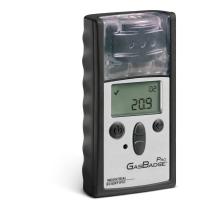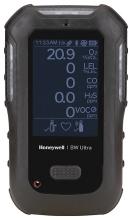Hydrogen cyanide / HCN

Gas Identification
Chemical properties
Physical properties
Flammability limit
Threshold limit value
Hydrogen cyanide : Description and use
Hydrogen cyanide is an extremely toxic product which can be fatal, as it causes anoxia. In the environment, it is often associated with benzaldehyde which gives off a bitter almond-like odour, which some people are unable to detect.
It is in the form of a highly volatile bluish-white liquid or a colourless gas with a bitter almond odour.
Flammability: Hydrogen cyanide is highly flammable. Heat, flames or some substances such as oxidising agents can cause it to catch fire. Vapours can spread to a source of ignition and cause a flashback.
Explosiveness: This product can form explosive mixtures with air. If heated to 50°C, it can polymerise explosively.
In the past, hydrogen cyanide was often used as fumigant, in grain silos or stores for example. These days, it is more often used as an intermediate to manufacture many chemical products commonly used in industry, in particular:
- adiponitrile for producing nylon
- sodium cyanide to extract gold
- methyl methacrylate for producing acrylic plastic
- triazines used in herbicides
It can also be generated when using some industrial facilities such as coke ovens and blast furnaces.
Hydrogen cyanide : Warnings and caution
H224 - Extremely flammable liquid and vapour.
H330 - Fatal if inhaled.
H410 - Very toxic to aquatic life with long-lasting effects.
P102 - Keep out of reach of children.
P284 - Wear respiratory protection.
P307+P311 - IF exposed: Call a POISON CENTRE or doctor/physician.
Hydrogen cyanide : Related products
Portable Gas Detectors
Multi-Gas Area Monitors














